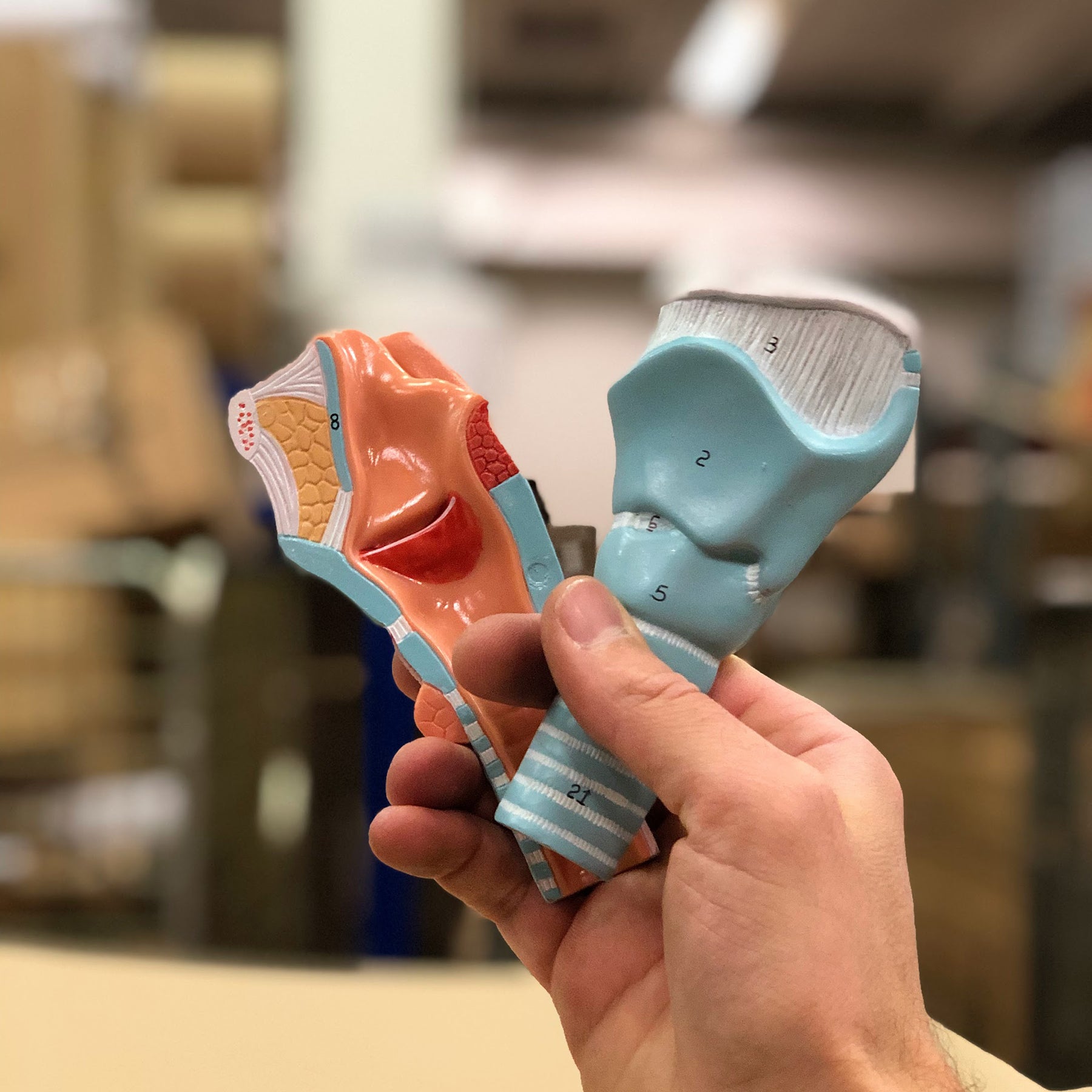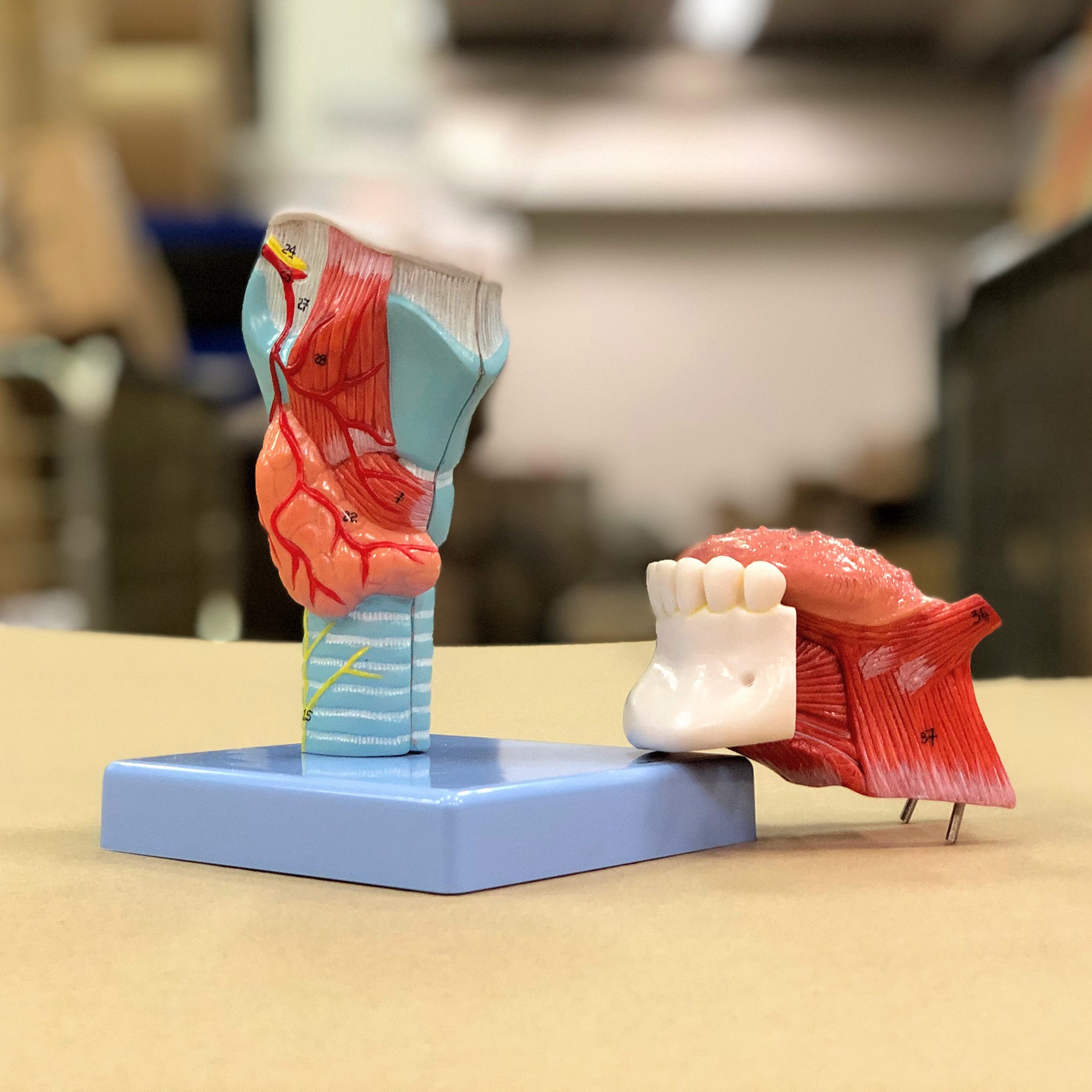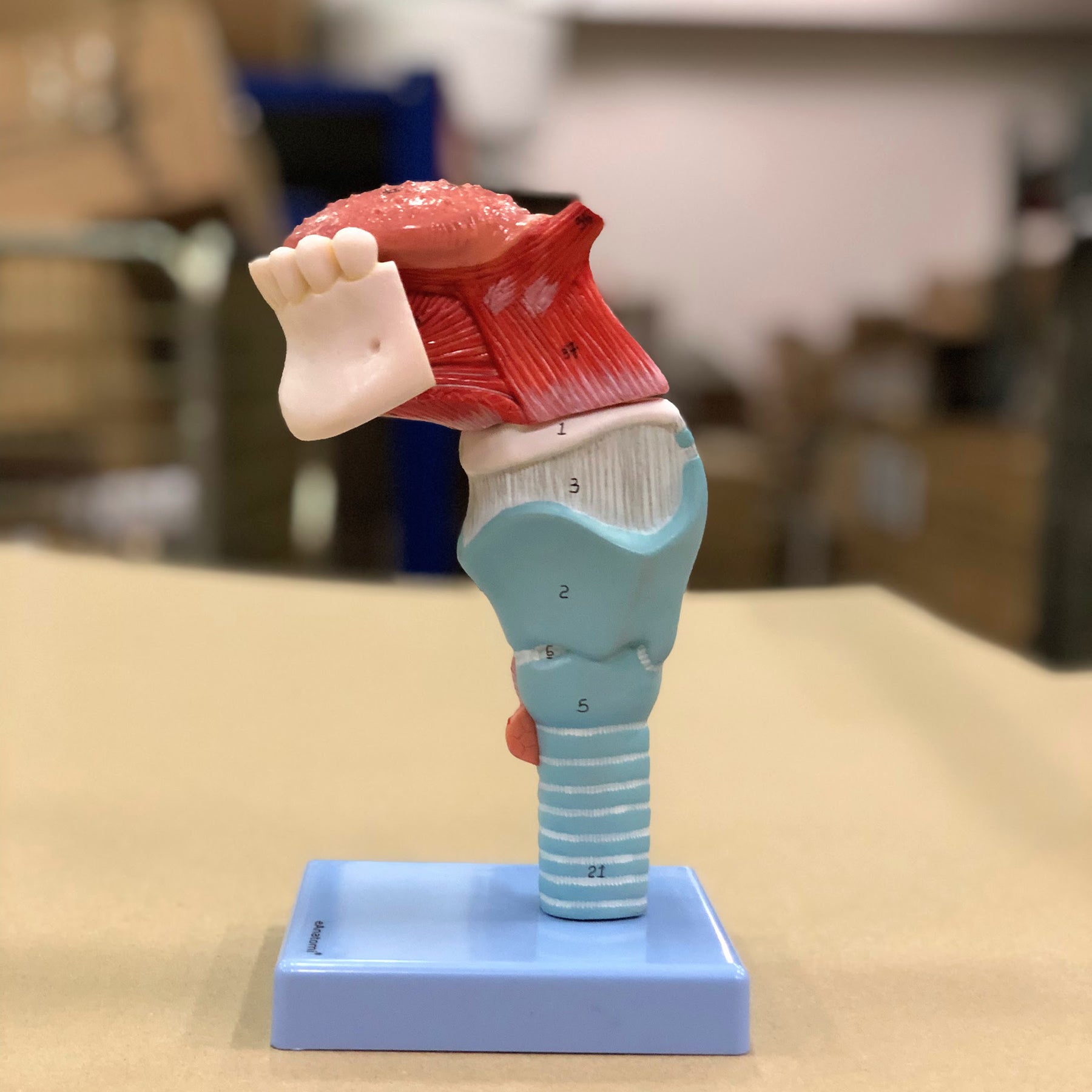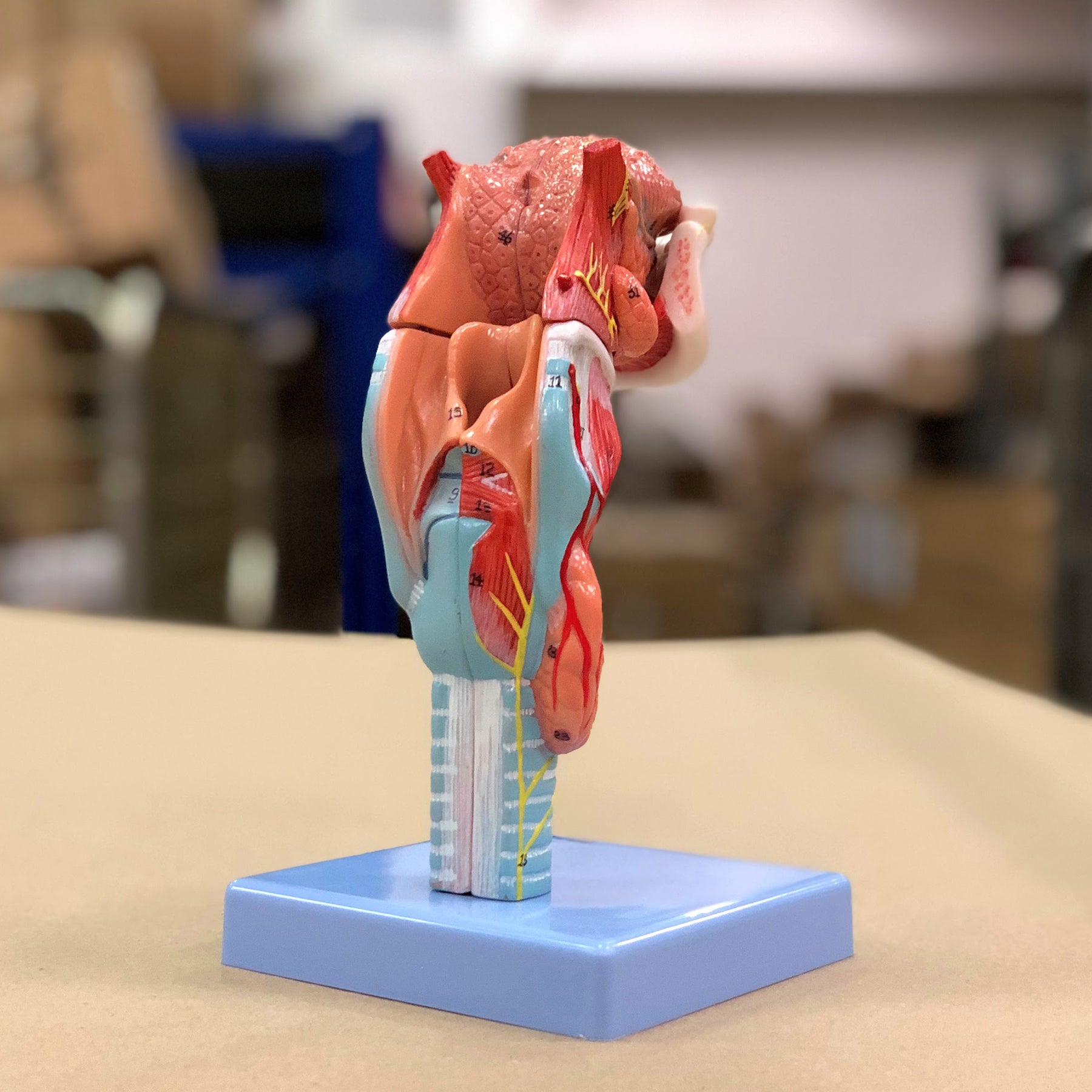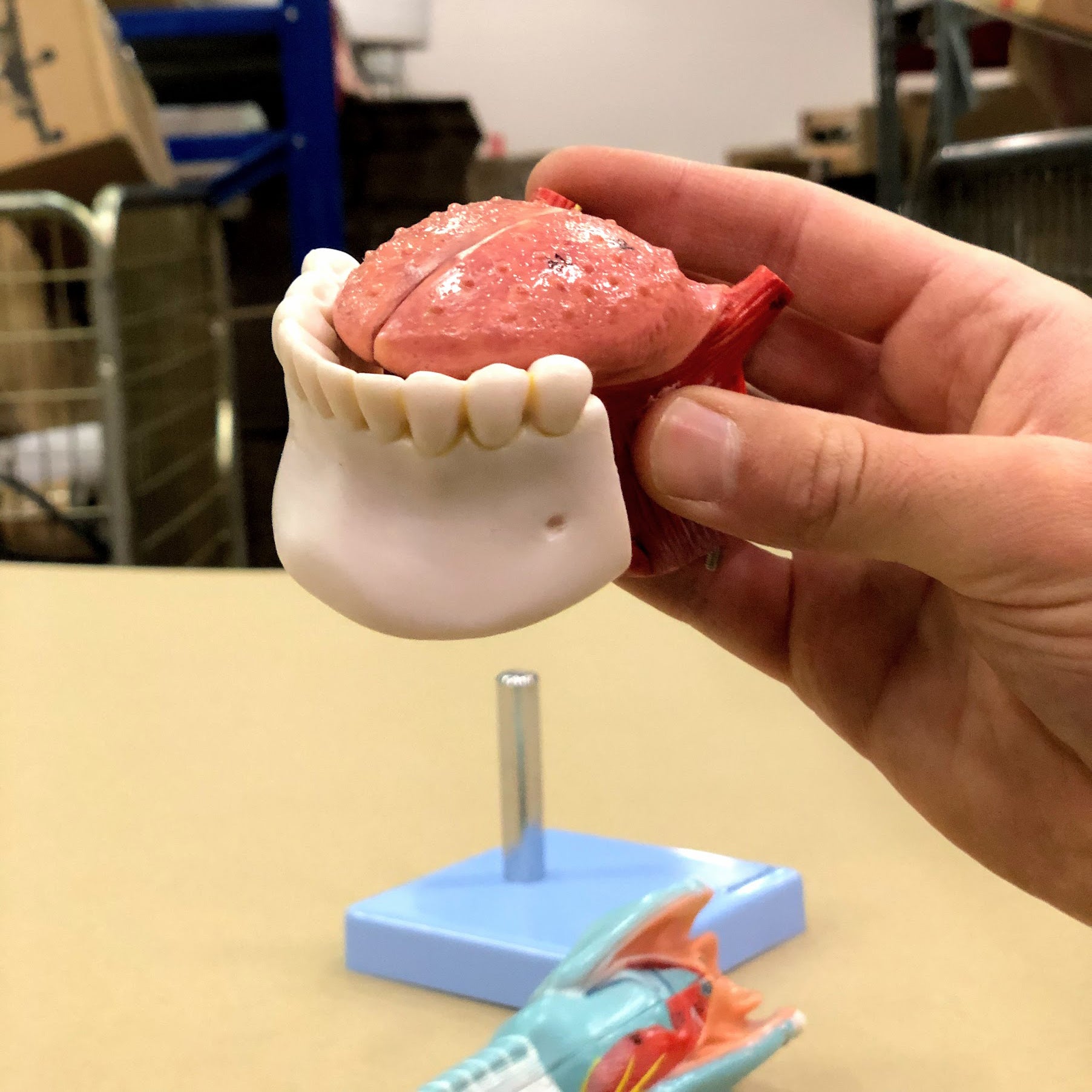SKU:EA1-A442
Larynx model with vocal folds and several other tissues. Can be separated into 5 parts
Larynx model with vocal folds and several other tissues. Can be separated into 5 parts
4 in stock
Couldn't load pickup availability
This educational larynx model with vocal folds also shows several related tissues such as musculature, a bit of the lower jaw, the thyroid gland and part of the trachea.
The throat model weighs 600 grams and the height is 17.5 cm. It can be separated into 5 parts (see the pictures on the left and read more about this below) and is delivered on a stand.
Anatomical features
Anatomical features
Anatomically speaking, the larynx model primarily shows the larynx/throat (larynx) with the laryngeal cartilages (blue), the laryngeal muscles (brown) and the larynx's vascular and nerve supply (in red and yellow respectively). The model also shows the 2 closing mechanisms, which are the larynx (epiglottis) and vocal folds (plicae vocales) as well as the 2 joints (articulatio cricothyroidea and cricoarytenoidea).
On the right side of the model, the thyroid gland can be seen in orange (glandula thyroidea), which in front covers the lower part of the larynx and the upper part of the windpipe (trachea). The trachea in blue forms the lower part of the model and is seen with the characteristic "horseshoe-shaped" rings of cartilage. On the back of the thyroid gland is seen 1 of the parathyroid glands (normally there are 4 in humans).
Above the larynx you can see the bone of the tongue in sand color (os hyoideum), muscles etc. Although the pharynx is not defined on the back of the model, you can still feel/imagine a part of this vertical tube.
At the top of the model you can see the tongue with various papillae, 2 salivary glands on the right side (glandula submandibularis and sublingualis), a bit of the mandible in sand color (mandible) as well as 4 incisors, the 2 canines and the 4 small molars (premolars).
The model can be separated into 5 parts as follows:
The lower jaw with the tongue and some muscles can be separated from underlying structures
The tongue can be separated from the lower jaw bone and divided in half (ie 3 parts)
Underlying structures with e.g. the larynx and trachea can be divided in half
Product flexibility
Product flexibility
In terms of movement, the throat model is not flexible. You cannot demonstrate movements in the 2 joints.
Clinical features
Clinical features
Clinically speaking, the model can be used to understand many disorders such as epiglottitis, vocal cord polyps, goiter, laryngeal oedema, and cancers.
Furthermore, the throat model can be used to understand examination methods such as laryngoscopy and treatments such as throat surgery.
Share a link to this product









A safe deal
For 19 years I have been at the head of eAnatomi and sold anatomical models and posters to 'almost' everyone who has anything to do with anatomy in Denmark and abroad. When you shop at eAnatomi, you shop with me and I personally guarantee a safe deal.
Christian Birksø
Owner and founder of eAnatomi ApS




